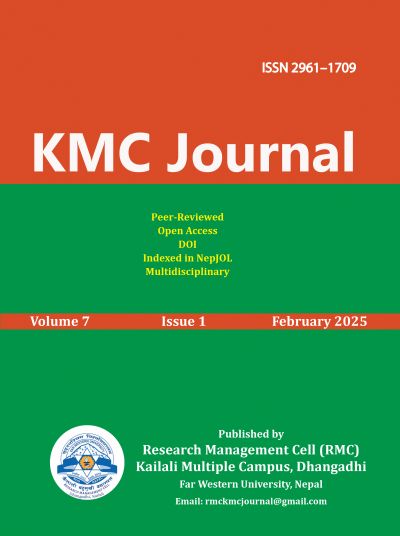A Deep Ecological Imagination in John Keats’ Selected Poems
DOI:
https://doi.org/10.3126/kmcj.v7i1.75125Keywords:
Ecocriticism, deep ecology, ecological consciousness, natureAbstract
Ecocriticism studies the relationship between humans and nature. It emphasizes examining literary texts from the perspective of the environment. The extreme development of technology and modernization is inviting an unimaginable environmental crisis. Humans’ relationship with nature is becoming fragile and humans’ viewpoint towards nature needs to be relooked again. The purpose of this research is to examine, discuss and interpret the selected poems of John Keats from a deep ecological perspective to trace the deep ecological imaginations. In particular, this paper used the insights of deep ecologists Arne Naess, Bill Devall and George Sessions’ interconnectedness, deep ecological principle, biocentric equity, ecological self and self-realization as the theoretical parameters and answered some of the research questions: Does the poet only celebrate nature by its mystic qualities or also unpack the human-nature relationship and try to discover the self? Does the poet sublime by nature’s beauty or find the inherent values of nature? In these selected poems, the poet searches for liberation, compares human feelings with nature and raises the question of humans’ deep relationship with nature. By analyzing, discussing and interpreting John Keats’s selected poems from an ecocritical perspective, this paper fostered the human-nature relationship to restore our relationship with nature and help to advance humans’ biocentric ecological consciousness towards nature for ecological balance.
Downloads
Downloads
Published
How to Cite
Issue
Section
License

This work is licensed under a Creative Commons Attribution-NonCommercial 4.0 International License.
This license allows reusers to distribute, remix, adapt, and build upon the material in any medium or format for noncommercial purposes only, and only so long as attribution is given to the creator.




